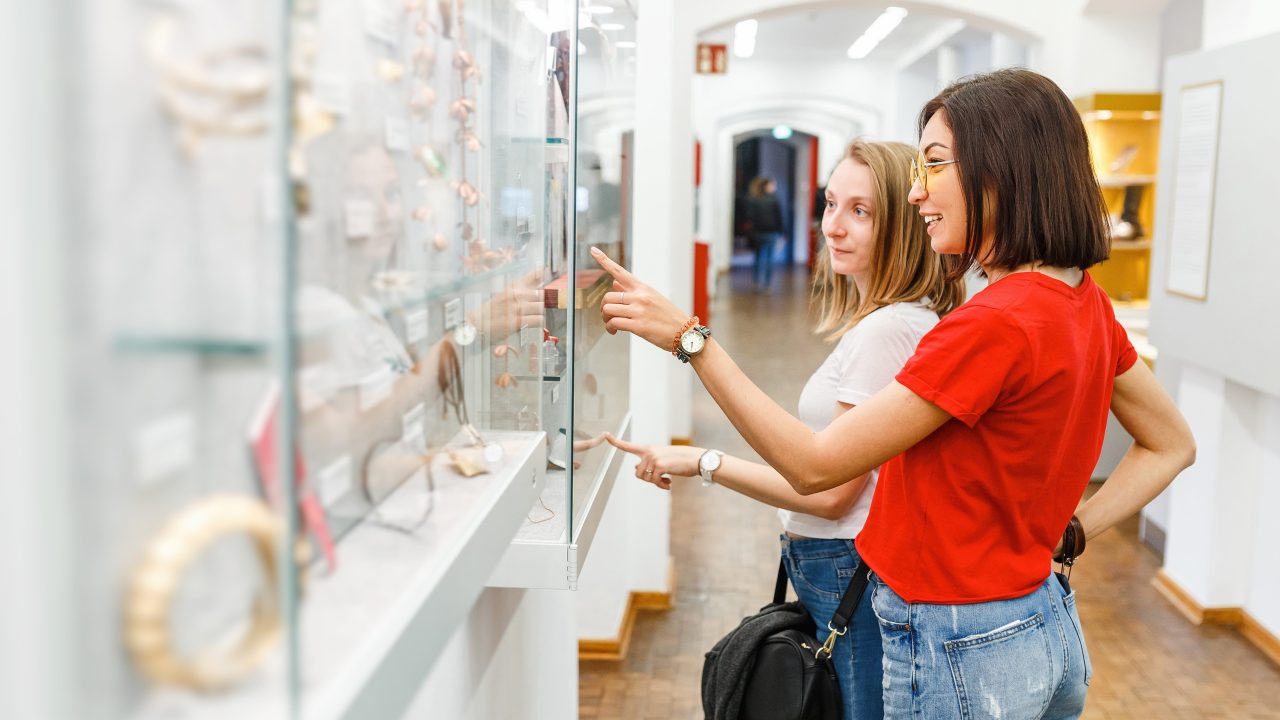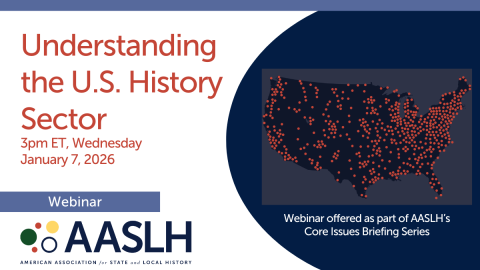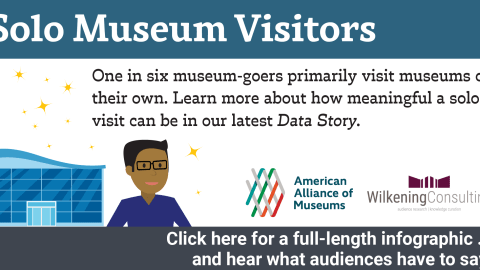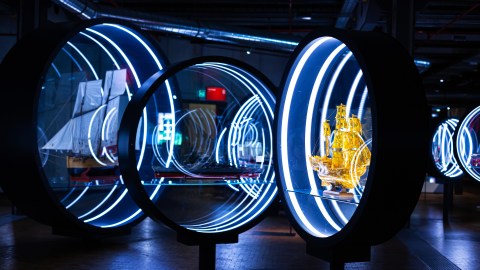
For nearly half a century, I have been thinking and theorizing about museum experiences—why people use museums, what they do during those experiences, and what they take away, including the value they perceive they derive. Today, though, my explanation of the museum experience is starkly different than it was forty years ago, or even fifteen years ago.
For much of my career I focused on learning, and more recently identity, but these days I have come to believe that there is an even more basic value that sits at the heart of the museum experience—enhanced well-being.
Let me be clear, though; when I say that people use museums as a vehicle for enhancing their well-being, I am using the term in quite a different way than most. Rather than framing well-being in purely psychological terms, with the primary outcome being happiness or “life satisfaction,” I argue that well-being is a basic biological process, a mechanism for achieving balance with one’s world. In fact, the pursuit of well-being is at the core of what it means to be alive, and the pursuit of human-specific dimensions of well-being are at the heart of what it means to be human.
For better or worse, the pursuit of well-being is a never-ending process. All of us have experienced this ongoing struggle for balance—we feel healthy today but were sick last week; we had a fight with our significant other yesterday but are getting along splendidly now. Despite these challenges, most people manage to stay mostly in balance most of the time. This is true in large part because everyone alive today is descended, culturally and genetically, from ancestors who themselves successfully figured out how to achieve well-being most of the time.[1]
From this perspective, humans are strongly drawn to experiences that they believe will support and enhance some aspect of their well-being. Given the fact that museums are currently popular leisure venues that most find highly satisfying, we can conclude that museum experiences must somehow be supportive of people’s well-being—at least some people, some of the time. Thus, the questions become, in what form, in what ways, and to what degree do museum experiences support the public’s well-being?
Museums and Well-Being
A wide range of research has shown that when people reflect on their museum experiences—days, weeks, and even years later—the benefits they describe fall into four distinct areas of enhanced well-being:[2]
- Personal Well-Being – Museums catalyze wonder, interest, and curiosity, all of which foster a sense of personal power and identity. They also support feelings that foster a greater sense of personal connectedness, appreciation, belonging, and harmony with the human and natural world, all in ways that people find fun and enjoyable.
- Intellectual Well-Being – Museums help people more clearly comprehend how their past understandings and activities connect, inspire awe and appreciation for the best of human and natural creation, and, under the best of circumstances, even serve as guides to a better, more informed and creative future.
- Social Well-Being – Museums enhance many users’ sense of belonging to family, group, and even community, and do so in ways that bestow the user with a high degree of status and respect.
- Physical Well-Being – Museums (at least historically) are perceived as safe, healthy, and restorative environments that allow people to gather (physically or virtually), interact, explore, play, and enjoy without fear or anxiety.
At least for those people who utilize museums, the museum experience appears to consistently result in positive feelings, feelings that typically result in some combination of all these well-being-related outcomes. Importantly, research beyond the sphere of museums has shown that when people consistently feel like they have achieved these kinds of personal, intellectual, social, and physical well-being-related outcomes, they are significantly more likely to believe they have lived a satisfying and successful life.[3]
Measuring the Value of Well-Being
Recently, building on years of my own and other’s research related to museum experiences, I set out to directly measure whether museum users indeed achieve these types of outcomes. To do so, I conducted a pilot study involving more than three hundred and fifty museum users from six museums across three countries.
The six institutions were the Museum of Life + Science, an indoor/outdoor nature and science museum located in the Southeastern US; Billings Farm & Museum, an outdoor and indoor living history museum located in the Northeastern US; History Nebraska, a more traditional history museum located in the Midwestern US; Heureka, an interactive science center located outside of Helsinki, Finland, in Northern Europe; the Toronto Zoo, located in Toronto, Canada; and Myseum of Toronto, a museum that explores history through art and culture, both virtually and in spaces across the city of Toronto. Not only did these six institutions represent at least three distinct national populations and several different subject matter foci—including history, culture, art, science, and nature—but they ranged in size and budget from small to large, serving between a few thousand and well over a million users per year.
My goal was to develop a way to measure—quantitatively and financially—the enhanced well-being a typical museum experience generated. I collected two independent data sets from the users of these institutions. The first measured the benefits, framed in terms of enhanced well-being, that museum users derived as a consequence of a recent museum experience. The second measured the monetary value that individuals perceived these specific enhanced well-being benefits were worth.
Results from the first set of data revealed that all six of the museums did indeed support the public’s well-being. Some museums were better at supporting social well-being, while others excelled at supporting intellectual, personal, or physical well-being. However, each institution in its own way generated significant well-being-related value for the vast majority of its users. Overall, museum experiences at all institutions resulted in users indicating enhancements to their intellectual, personal, social, and/or physical well-being, with benefits typically lasting days and in some cases weeks.
Results from the second set of data showed that people do indeed value these types of enhanced well-being outcomes. Consistently across both institution type and nationality, people indicated that achieving these outcomes was worth a considerable amount of money, with the perceived value increasing as a function of duration. In other words, even a short-term and ephemeral increase in personal, intellectual, social, or physical well-being was judged to be valuable, but the longer a benefit lasted, the more it was worth.
By combining these two data sets, I was able to calculate the total monetary “value” created by a typical day-long visit to a museum: 417 dollars. Furthermore, I was able to extrapolate this data to measure the total monetary value museums deliver to all their users across a year of museum experiences, with totals ranging from a low of around ten million dollars for the smallest museum to a high of over five hundred million dollars for the largest. It was also possible to calculate the more useful measure of Return on Investment (ROI)—the total value created divided by the total cost required to deliver that value. The overall annual ROI for museums in terms of well-being ranged from a low of roughly seven dollars of value for every one dollar of cost to an eye-popping eighteen dollars of value for each one dollar of cost. (For reference, most for-profits feel good if they make ten cents on a one-dollar investment.) For those interested, additional details about this pilot work can be found in my new book: The Value of Museums: Enhancing Societal Well-Being.[4]
These are exciting numbers, but for now they should be taken with a grain of salt, as they were based on just a small pilot study. I am currently in the process of organizing a series of additional research studies designed to more rigorously and definitively measure these outcomes, the first of which has just begun in Finland. Over the next year, my colleagues and I will be collecting and analyzing data from more than four thousand visitors to eight diverse Finnish museums.
Conclusion
The theoretical and methodological approach I describe in this post provides museums with a timely and compelling way to both better understand and more persuasively explain the benefits of the experiences they create. The key insight is that museum experiences successfully create value by measurably enhancing a fundamental public need: the desire for personal, intellectual, social, and physical well-being. Although the field has historically seen these kinds of benefits as vague and intangible, the approach outlined above shows that they can be measured directly, validly, reliably, and quantitatively.
Knowingly or not, museums have long excelled at enhancing well-being, with users reporting that their museum experiences make them feel better about themselves, more informed, happier, healthier, and more enriched. Despite this historical success, however, a positive future for museums is not guaranteed and will not happen without significant effort.
The true value of museums lies in how, why, and by whom they are used. Exhibitions, objects, programs, films, and presentations merely provide the opportunity and the context for value creation. Therefore, the path to a successful future for museums lies in being able to do two things. First, museums need to continue to not only find ways to consistently and genuinely provide current museum users with experiences that fulfill and enhance their personal, intellectual, social, and physical well-being, but equally they need to find ways to extend those benefits to ever-larger proportions of the public, particularly those with less social and economic advantage. And second, museums need to find ever-better ways to document and describe to policymakers and funders the value that museum experiences create. Although neither of these tasks is easy, I believe the ideas and approaches laid out above, and expanded on in my new book, provide a strong foundation for how they might be achieved.
End Notes
[1]. For a deep dive into these ideas, see Falk, J.H. (2018). Born to Choose: Evolution, self and well-being. London: Routledge.
[2]. For a review of this literature see, Falk, J.H. (2021). The Value of Museums: Enhancing Societal Well-Being. Lanham, MD: Rowman & Littlefield.
Also, Latham, K.F. & Cowan, B. (in press). Flourishing in museums: Toward a positive museology. Routledge.
[3]. See, Ryff, C. D. (1989). Happiness is everything, or is it? Explorations on the meaning of psychological well-being. Journal of Personality and Social Psychology, 57(6): 1069–1081.
Also, Falk, J.H. (2021). The Value of Museums: Enhancing Societal Well-Being. Lanham, MD: Rowman & Littlefield.
[4]. Falk, J.H. (2021). The Value of Museums: Enhancing Societal Well-Being. Lanham, MD: Rowman & Littlefield.








Thanks for this useful and important piece about the value of museum experiences!
This article provides an important shift from the usual focus on the value and importance of objects, to the true product of museums, the value of the experience of people. It is a great service to have data to support what many in the field have experienced over many years. The concluding points are critical to the future of museums. Thank you, John!
In 1967, our 6th grade social studies curriculum was focused on “world history.” For culmination, I was selected to give a speech titled “Our Changing World.” As I read this article about the “personal, intellectual, social, and physical well-being-related outcomes” of visiting museums, I recalled the opening lines of my speech: “Our world has changed much since long ago. We have had physical changes, industrial changes, and mental changes.” Although I had no doubts, Dr. Falk’s new research confirms the multi-faceted role of museums in our changing world.
Thank you, John for this thoughtful piece, this is right where so many of us are in our continuum of service. I appreciate you putting the time into capturing this topic in a blog.